In the late 19th century, the Crown & Anchor Brewery stood on the site of this Wetherspoon pub, a short walk from the site of Luton’s first brewery. Founded by Thomas Burr, in 1780, it stood next to his family home, known as The White House.
Photographs and text about Vauxhall Motors.
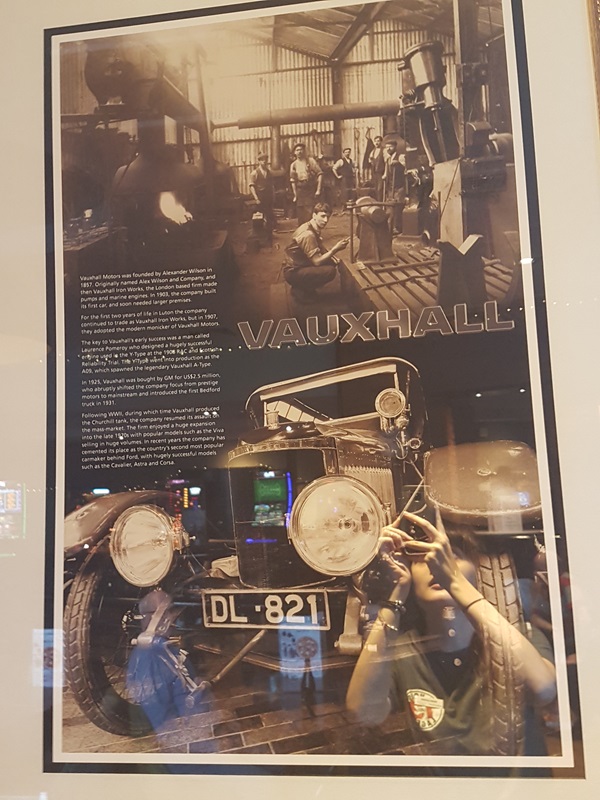
The text reads: Vauxhall Motors was founded by Alexander Wilson in 1857. Originally named Alex Wilson and Company, and then Vauxhall Iron Works, the London based form made pumps and marine engines. In 1903, the company built its first car and soon needed larger premises.
For the first two years of life in Luton the company continued to trade as Vauxhall Iron Works, but in 1907, they adopted the modern moniker of Vauxhall Motors.
The key to Vauxhall’s early success was a man called Laurence Pomeroy who designed a hugely successful engine used in the Y-Type at the 1908 RAC and Scottish Reliability Trial. The Y-Type went into production as the A09, which spawned the legendary Vauxhall A-Type.
In 1924, Vauxhall was bought by GM for US$2.5 million, who abruptly shifted the company focus from prestige motors to mainstream and introduced he first Bedford truck in 1931.
Following WWII, during which time Vauxhall produced the Churchill Tank, the company resumed its assault on the mass market. The form enjoyed a huge expansion into the late 1970s with popular models such as the Viva selling huge volumes. In recent years the company has cemented its place as the country’s second most popular carmaker behind Ford, with hugely successful models such as the Cavalier, Astra and Corsa.
A print and text about the Churchill Tank.
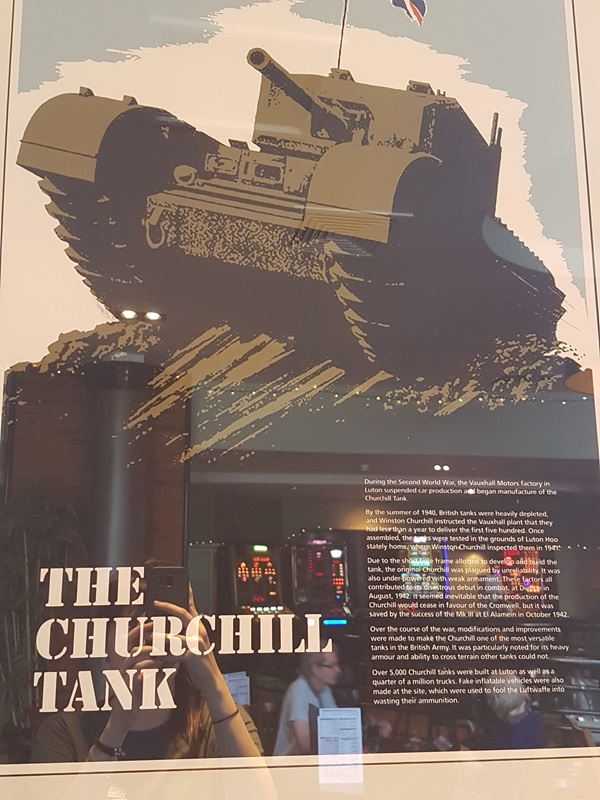
The text reads: During the Second World War, the Vauxhall Motors factory in Luton suspended car production and began manufacture of the Churchill Tank.
By the summer of 1940, British tanks were heavily depleted, and Winston Churchill instructed the Vauxhall plant that they had less than a year to deliver the first five hundred. Once assembled, the tanks were tested in the grounds of Luton Hoo stately home, where Winston Churchill inspected them in 1941.
Due to the short time frame allotted to develop and build the tank, the original Churchill was plagued by unreliability. It was also under-powered with weak armament. These factors all contributed to its disastrous debut in combat, at Dieppe in August, 1942. It seemed inevitable that the production of the Churchill would cease in favour of the Cromwell, but it was saved by the success of the Mk lll at El Alamein in October 1942.
Over the course of the war, modifications and improvements were made to make the Churchill one of the most versatile tanks in the British Army. It was particularly noted for its heavy armour and ability to cross terrain other tanks could not.
Over 5,000 Churchill tanks were built at Luton as well as a quarter of a million trucks. Fake inflatable vehicles were also made at the site, which were used to fool the Luftwaffe into wasting their ammunition.
Text about Luton Hoo stately home where the Churchill tanks were tested.
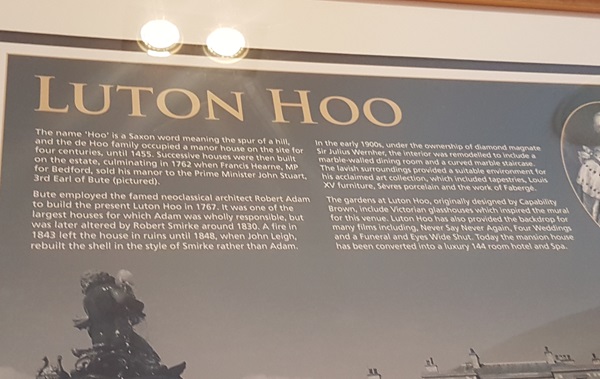
The text reads: The name ‘Hoo’ is a Saxon word meaning the spur of a hill, and the de Hoo family occupied a manor house on the sire for four centuries, until 1455. Successive houses were then built on the estate, culminating in 1762 when Francis Hearne, MP for Bedford, sold his manor to the Prime Minister John Stuart, 3rd Earl of Bute.
Bute employed the famed neoclassical architect Robert Adam to build the present Luton Hoo in 1767. It was one of the largest houses for which Adam was wholly responsible, but was later altered by Robert Smirke around 1830. A fire in 1843 left the house in ruins until 1848, when John Leigh, rebuilt the shell in the style of Smirke rather than Adam.
In the early 1900s, under the ownership of diamond magnate Sir Julius Wernher, the interior was remodelled to include a marble-walled dining room and a curved marble staircase. The lavish surroundings provided a suitable environment for his acclaimed art collection, which included tapestries, Lois XV furniture, Sevres porcelain and the work of Faberge.
The gardens at Luton Hoo, originally designed by Capability Brown, include Victorian glasshouses which inspired the mural for this venue. Luton Hoo has also provided the backdrop for many films including, Never Say Never Again, Four Weddings and a Funeral, and Eyes Wide Shut. Today the mansion house has been converted into a luxury 144 room hotel and spa.
A photograph and text about Joseph Conrad.
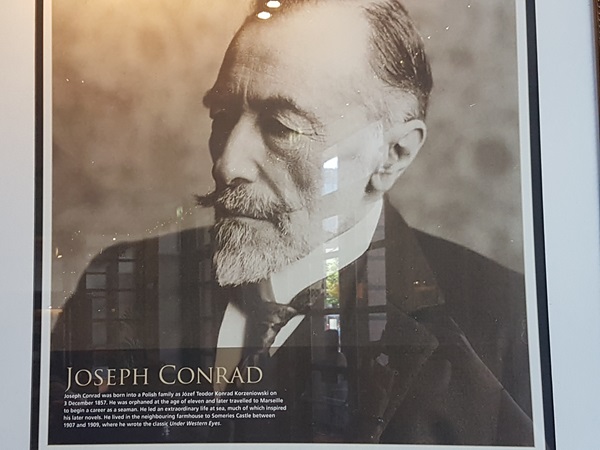
The text reads: Joseph Conrad was born into a Polish family as Jozef Teodor Konrad Korzenlowski on 3 December 1857. He was orphaned at the age of eleven and later travelled to Marseille to begin a career as a seaman. He led an extraordinary life at sea, much of which inspired his later novels. He lived in the neighbouring farmhouse to Someries Castle between 1907 and 1909 where he wrote the classic Under Western Eyes.
A photograph of the Hat Factory, 64 Bute Street, Luton.
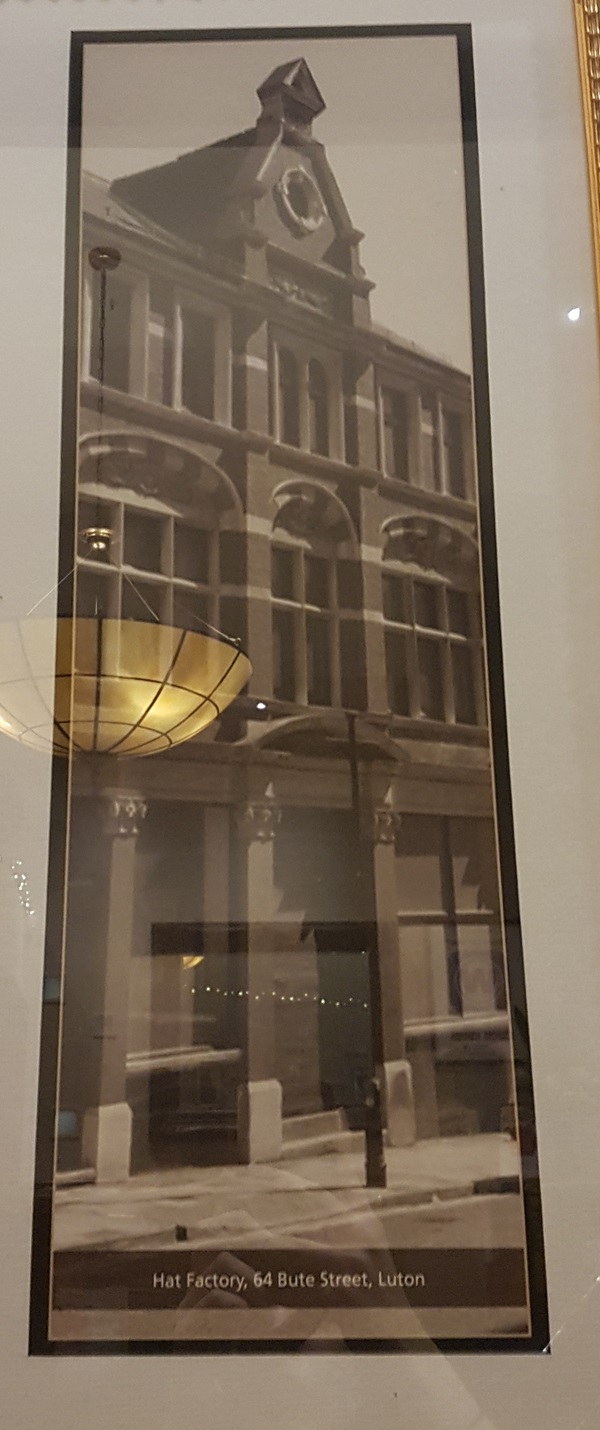
A selection of illustrations showing Gregory, Cubitt & Sons hats.
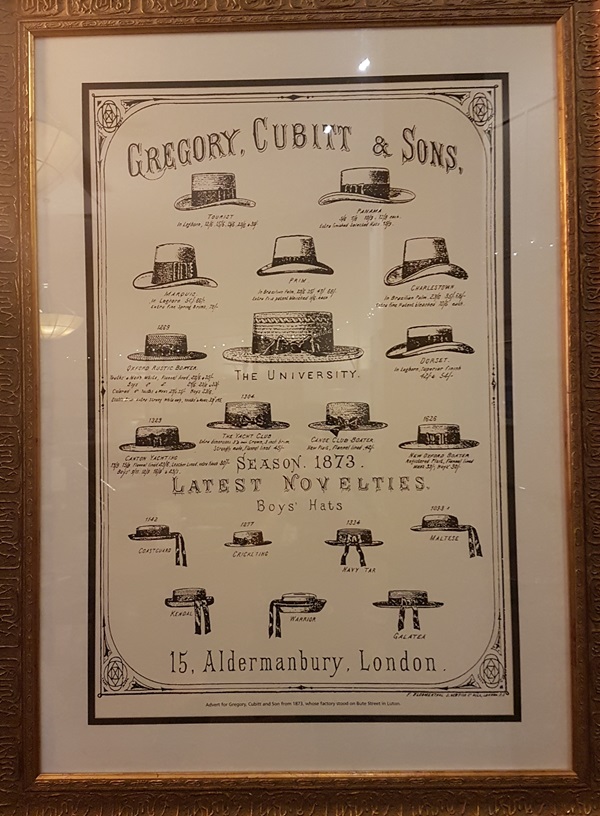
Photographs showing the different stages of hat making.
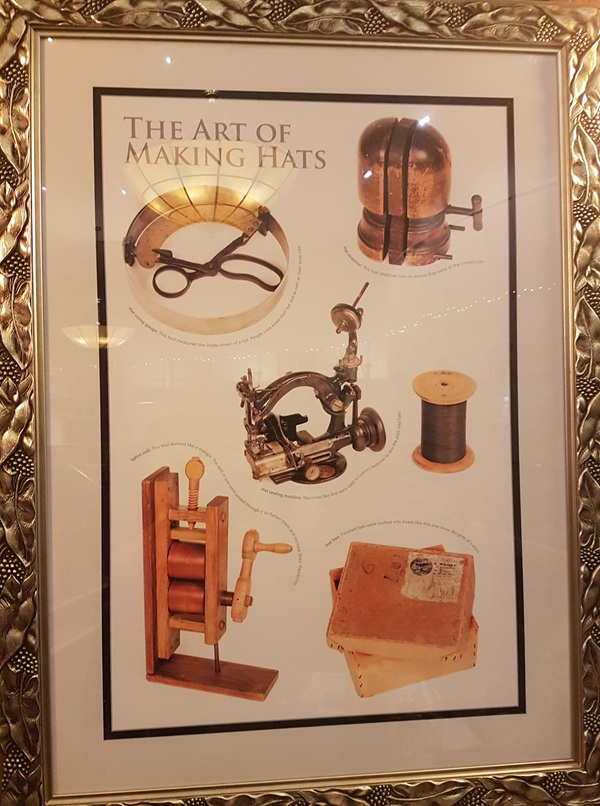
If you have information on the history of this pub, then we’d like you to share it with us. Please e-mail all information to: pubhistories@jdwetherspoon.co.uk